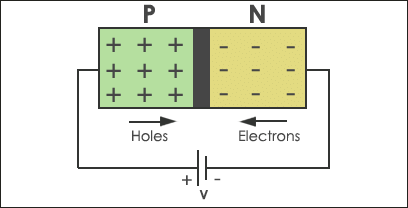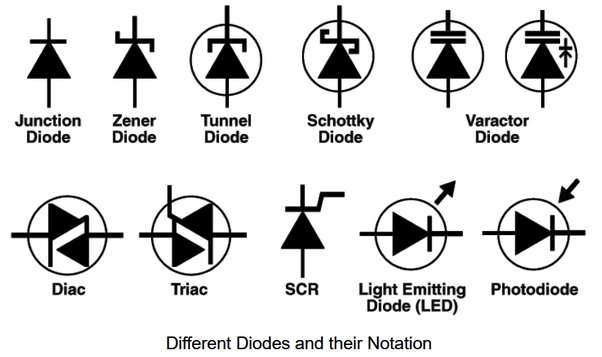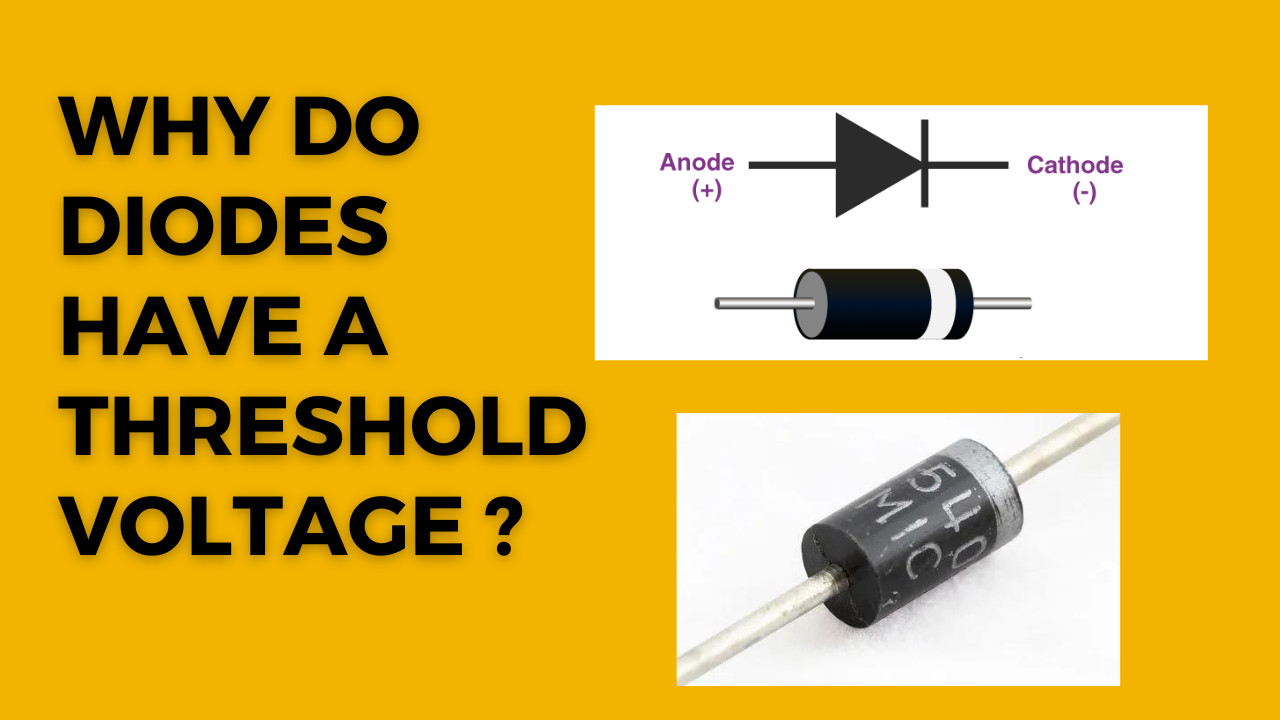The diode is one of the most crucial and fundamental component of any electronic circuit in modern electronics. Diode is a semiconductor device which functions as a one-way gate, permitting just one direction of current passage while obstructing the flow in the other. Diodes are frequently employed in electronic circuits when only one direction of current flow is necessary, but they only begin to conduct in that direction after an external voltage value is reached; before this voltage, the diode serves as an open circuit. This minimal voltage is referred to as the threshold voltage. The major query at this point is why do diodes have a threshold voltage? We’ll discuss the fundamental operation and structure of diodes in this post.
Table of Contents
What is Diode, P-N junction, Threshold voltage?
A diode is a two-terminal semiconductor device that permits electricity to flow in one direction but prevents it from flowing in the other. Diode is a combination of p-type and n-type semiconductor both are infused together, and diode is often made up of silicon or germanium. The p-side is abundant in the vacant spaces for electrons known as “holes,” whereas the n-side has an excess of electrons. P-N junction refers to the junction between p-type and n-type materials.

A small electric field of voltage known as junction voltage is created when some electrons from the n-side cross the boundary to occupy the vacant position in the p-side in the free state without any external voltage. This causes a slightly negative charge to develop on the p-type boundary and a slightly positive charge to develop on the n-type boundary. Until an external voltage is applied, this junction voltage stops further electron passage from the n-type to the p-type.

Electrons won’t feel any force when we apply a forward bias voltage (less than junction voltage) that is positive on the p-side and negative on the n-side because they need external voltage to be greater than the junction voltage to cross the junction and begin conducting. Threshold voltage is the minimal external voltage needed for electrons to begin conduction and form a closed circuit.

Factors on which Threshold voltage depends
- Material Composition: The threshold voltage varies depending on the energy band gap of the semiconductor material. The most widely used semiconductor, silicon, has a threshold voltage of roughly 0.7 volts, while germanium-based diodes have a threshold voltage of roughly 0.3 volts.
- Temperature: The diode’s threshold voltage fluctuates with temperature. The performance of the diode will ultimately be impacted when the threshold voltage marginally decreases with increasing temperature.
- Doping Concentration: Threshold voltage can change depending on the quantity of free electrons in n-type and free holes in p-type. High doping results in more accessible free charges, which lowers threshold voltage.
Why do diodes have a Threshold voltage
As was said earlier, a minimum voltage is required for a diode to function; applying forward bias voltage that is less than junction voltage is insufficient to allow electrons to cross the boundary and begin conducting. The P-N junction’s structure is the reason for this minimal voltage need. When the environment was steady and there was no external voltage, some charges accumulated on the P-N junction, which is what prevents further charge transfer even in the presence of external voltage. This is the reason why do diodes have a threshold voltage.
Types of Diodes
Diodes are available in various forms with different characteristics and properties, and they are used in different applications. Some of them are:
- Light Emitted Diode (LED)
- Laser Diode
- Zener Diode
- Schottky Diode
- Photodiode
- Tunnel Diode
- Avalanche Diode
- Vacuum Diode
- Varactor Diode

Conclusion
Every electronic circuit’s core components are diodes and transistors. Diode structure and construction are essential for you to understand whether you are interested in electronics, or you are in 12th standard, or you are pursuing an engineering degree. This article will answer all of your queries regarding the operation of P-N junction and diode.
FAQs
How is threshold voltage measured?
Threshold voltage is typically measured using a device called an oscilloscope. By observing the voltage at which the diode begins to conduct, engineers can determine its threshold voltage.
Can the threshold voltage of a diode be altered?
Yes, but it’s not straightforward. Manufacturing processes, doping levels, and material choices can all influence the threshold voltage.
Are there diodes without a threshold voltage?
All diodes have a threshold voltage; however, the value can vary based on the type of diode and its construction.
Do LEDs have a threshold voltage?
Yes, Light Emitting Diodes (LEDs) also have a threshold voltage. It’s typically higher than regular diodes due to the additional energy needed to produce light.
More reads you might like

